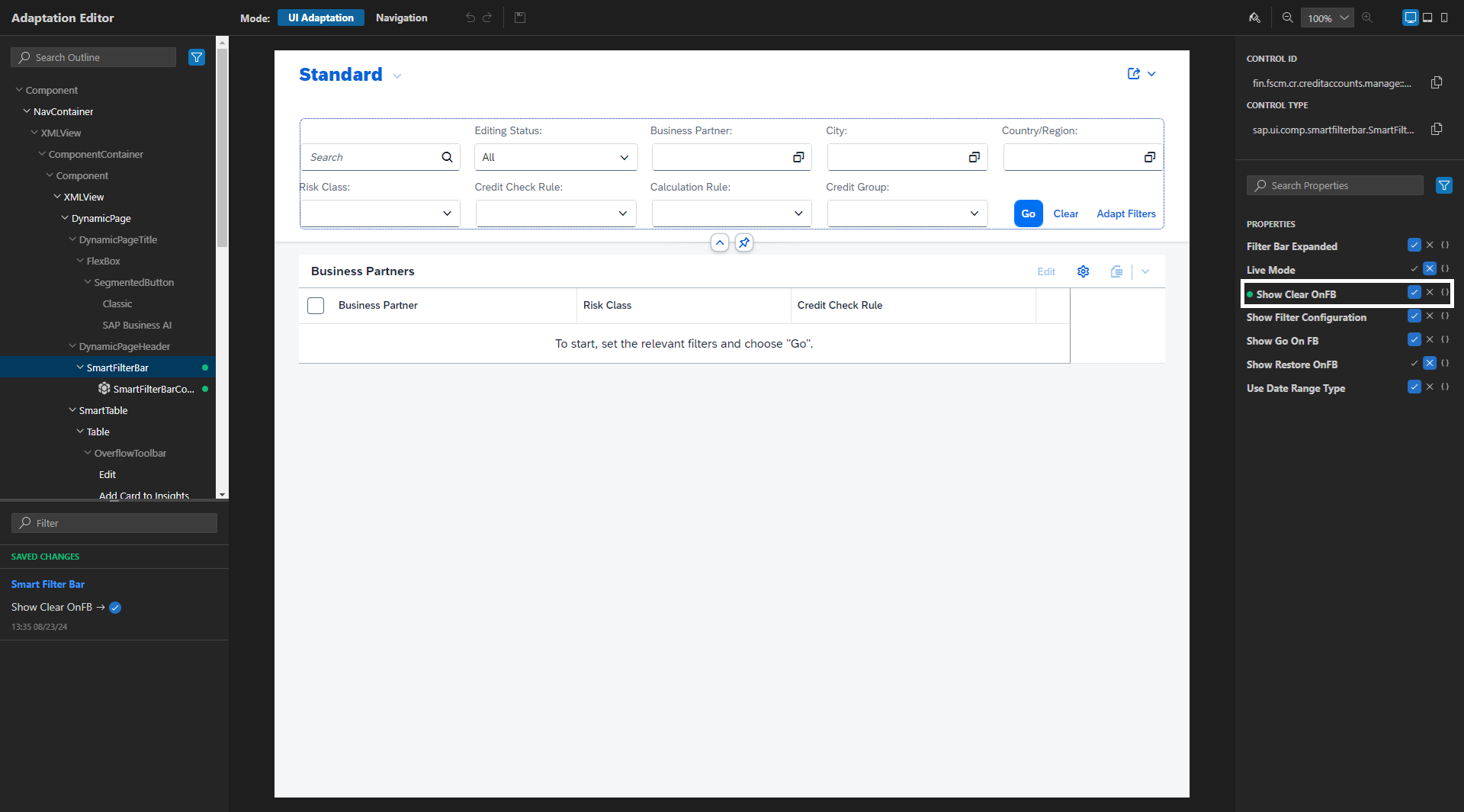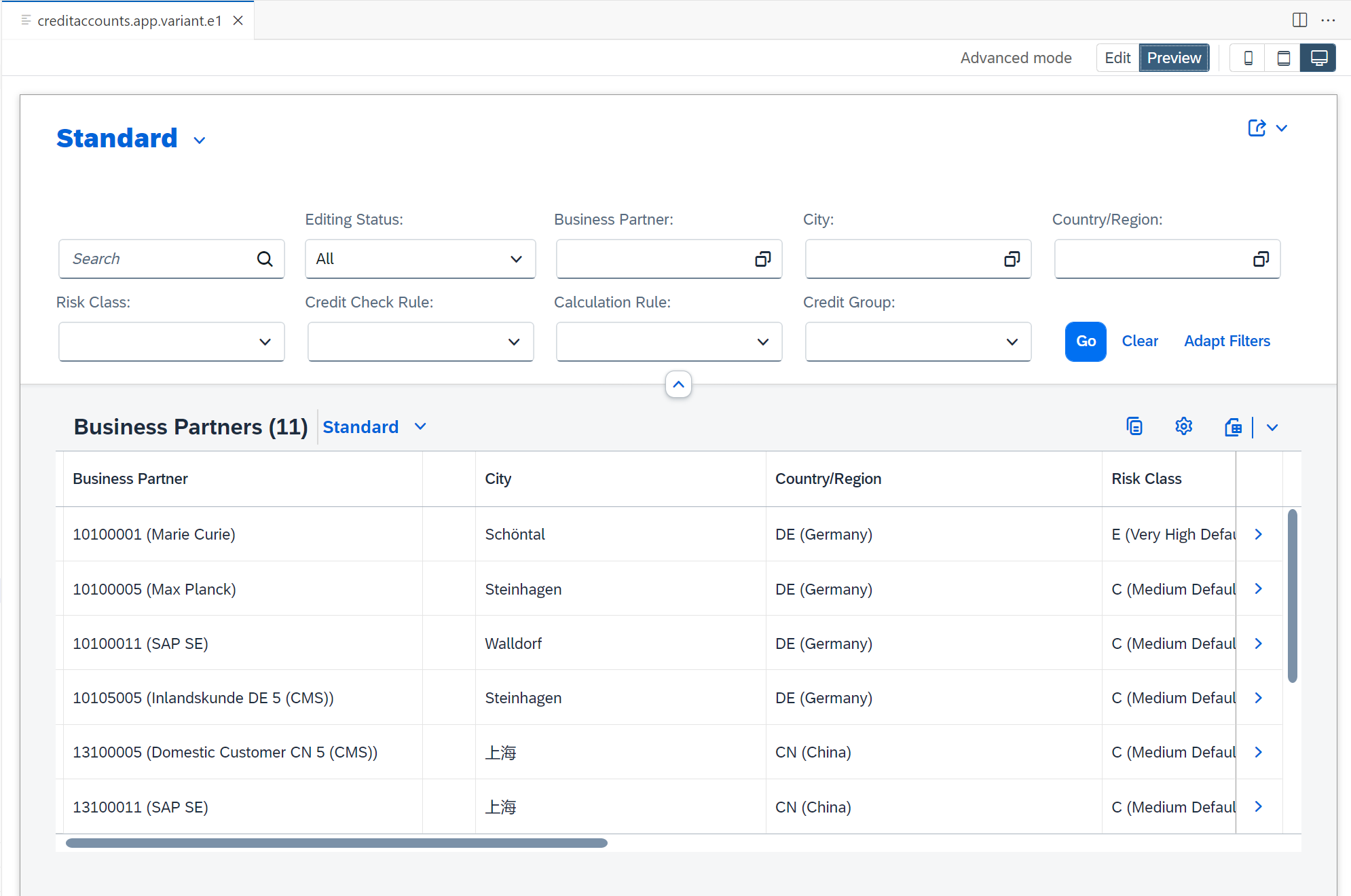Work with SAPUI5 Adaptation Projects to generate and make simple changes to an application variant of an SAP Fiori application in SAP S/4HANA Cloud Public Edition (1 of 3)
- About SAPUI5 Adaptation Projects.
- How to create an SAPUI5 Adaptation Project in SAP Business Application Studio to generate a variant of an SAP Fiori application.
- Use the Adaptation Editor to define simple and effective changes to your application variant.
- Add simple source code to the Manifest file to change the table properties.
Prerequisites
For more information about how to set up and work with SAP Business Application Studio, see:
- SAP Fiori Applications in the ABAP Environment
- Integration SAP Business Application Studio
- Develop an SAP Fiori Application UI and Deploy it to SAP S/4HANA Cloud Using SAP Business Application Studio
- Before you can start working with SAPUI5 Adaptation Projects in SAP Business Application Studio, you must first perform the following steps in SAP S/4HANA Cloud, ABAP environment using ABAP Development Tools (ADT):
1. Create a transport request
2. Create an ABAP Package
Important information
This group of three tutorials focuses on SAPUI5 Adaptation Projects in SAP S/4HANA Cloud Public Edition. The same basic principles and features of SAPUI5 Adaptation Projects similarly apply to SAP S/4HANA and SAP S/4HANA Cloud Private Edition. While the first and second tutorials also largely apply to SAP S/4HANA and SAP S/4HANA Cloud Private Edition, the third tutorial applies specifically to SAP S/4HANA Cloud Public Edition.
To learn more about SAPUI5 Adaptation Projects in SAP S/4HANA, please see the SAP Help Portal:
Please note: the documentation is also valid for SAP S/4HANA Cloud Private Edition.
When to extend
SAP S/4HANA Cloud Public Edition delivers the latest industry best practices, innovations, and business applications to you as a service. If a standard SAP Fiori application doesn’t fully support your business process or the specific needs of some of your business users, you can extend SAP S/4HANA Cloud Public Edition by creating and adapting an application variant, while the original SAP Fiori application remains available and unchanged. In an application variant, you can extend the original code to define changes that fulfill the specific business requirements of different business roles, user groups, organizational units, and countries. For example, you might want to create an application variant to simplify and streamline a specific process by hiding fields not required by casual users, visualizing data as a chart, or changing a responsive table to a grid table to make information easier to process.
New for SAP S/4HANA Cloud Public Edition 2402
As of SAP S/4HANA Cloud Public Edition 2402, developers can work with SAPUI5 Adaptation Projects in SAP Business Application Studio (BAS) to create application variants. Developers efficiently reuse the original SAP Fiori application together with its OData service and application logic to define changes that are specific to the application variant only.
After deployment, both the source application and the newly created application variant exist with distinct titles and can be made available to the relevant business users through uniquely named application tiles in SAP Fiori launchpad: My Home. After a Cloud upgrade, developers can test the application variant in SAP Business Application Studio and, if there are no issues, they can deploy it again to benefit from the latest SAP enhancements to the original application (see Check Whether the Base App of an Adaptation Project Is Up-To-Date).
The following figure shows the relationship between the source application (blue) and an application variant (green):

Use case
Let’s imagine you’ve received feedback from a group of Credit Controllers at your company who occasionally work with the SAP Fiori application Manage Credit Accounts: (https://fioriappslibrary.hana.ondemand.com/sap/fix/externalViewer/#/detail/Apps('F4596')/S31). You’ve been informed that the standard application does not fully support their needs. By creating an application variant, as opposed to developing a new custom application from scratch, you can efficiently make the changes for this group of Credit Controllers, while other Credit Controllers at your company can continue to use the original application.
The Manage Credit Accounts application is based on the List Report Object Page floorplan. You will simplify the user experience for this specific group of Credit Controllers by:
List Report:
- Providing them with a Clear button in the filter bar
- Enabling them to use variant management in the table
- Changing the table type from a Responsive Table to a Grid Table using the condensed table layout

Object Page:
- Removing the header facets they don’t need
- Removing the sections they don’t need

If you want to view the original Manage Credit Accounts application in My Home in SAP S/4HANA Cloud Public Edition, you must first log onto your ABAP system as an Administrator, open the Maintain Business Roles application, create a business role from the role template SAP_BR_CREDIT_CONTROLLER and assign the business role to your user (for more information, see How to Create a Business Role from a Template).
Watch this short video to see what changes you’ll make once you complete the three developer tutorials:










